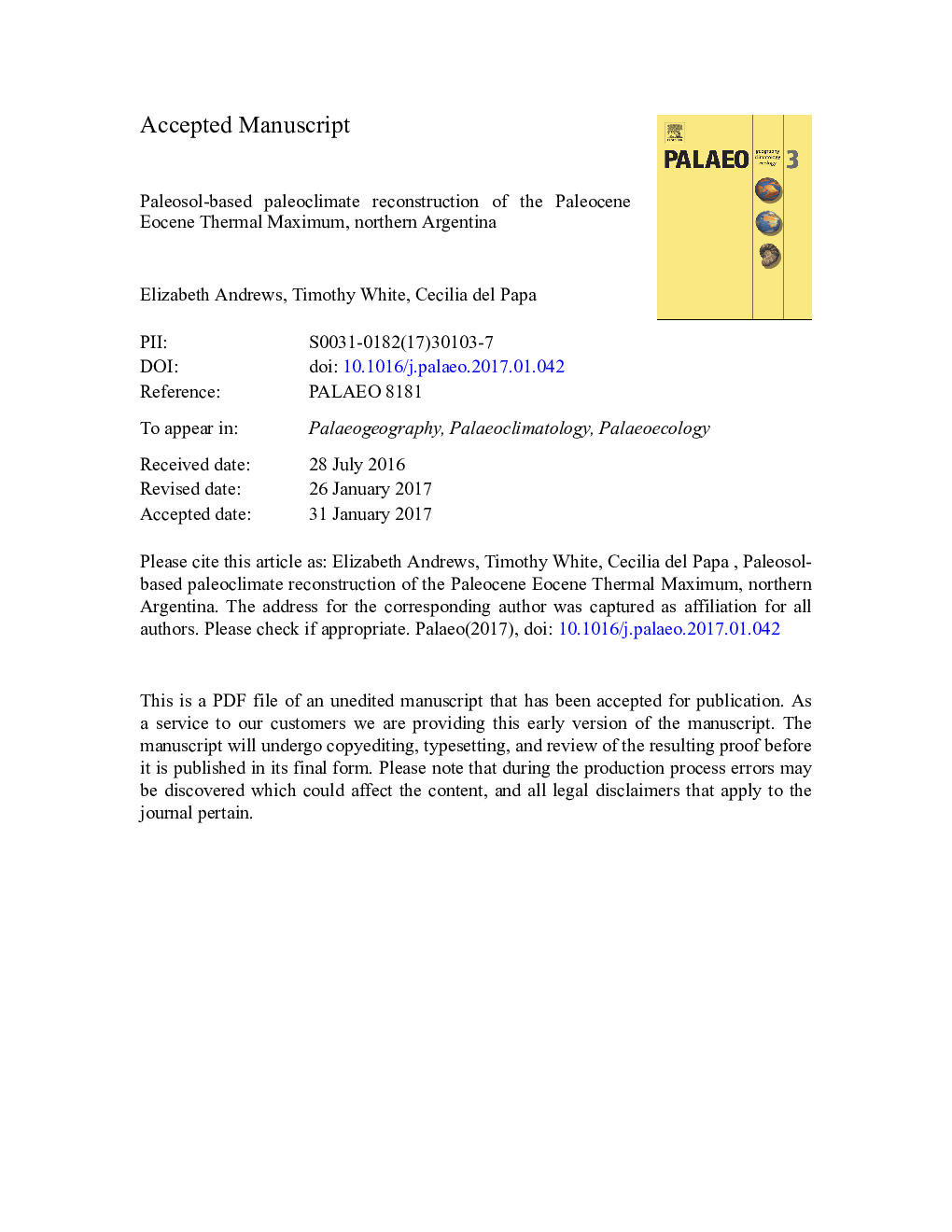| Article ID | Journal | Published Year | Pages | File Type |
|---|---|---|---|---|
| 5755936 | Palaeogeography, Palaeoclimatology, Palaeoecology | 2017 | 41 Pages |
Abstract
In this study, paleosols in the Salta Basin, northern Argentina, are used to reconstruct paleoprecipitation rates and mean annual paleotemperatures of the Southern Hemisphere from before, during and after the PETM. Carbon isotope data are used to: 1) identify the horizon in which the PETM and other Eocene hyperthermals are recorded; and, 2) to interpret perturbations of the global carbon cycle during the PETM. At the height of the PETM, paleoprecipitation proxies indicate ~ 1500 mm of annual rainfall and a temperature increase of ~ 5 °C from pre-PETM values. Carbon isotope data records three negative carbon isotope excursions during the PETM in this region, suggesting the possibility of three distinct, rapid releases of isotopically depleted carbon into the ocean-atmosphere system. The results presented here are one of only a few paleoclimate reconstructions from continental sediments spanning the PETM in the Southern Hemisphere.
Related Topics
Physical Sciences and Engineering
Earth and Planetary Sciences
Earth-Surface Processes
Authors
Elizabeth Andrews, Timothy White, Cecilia del Papa,
